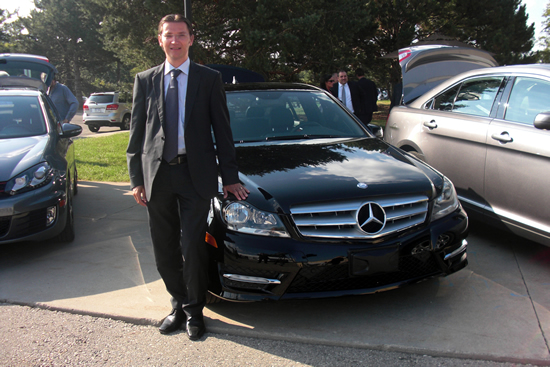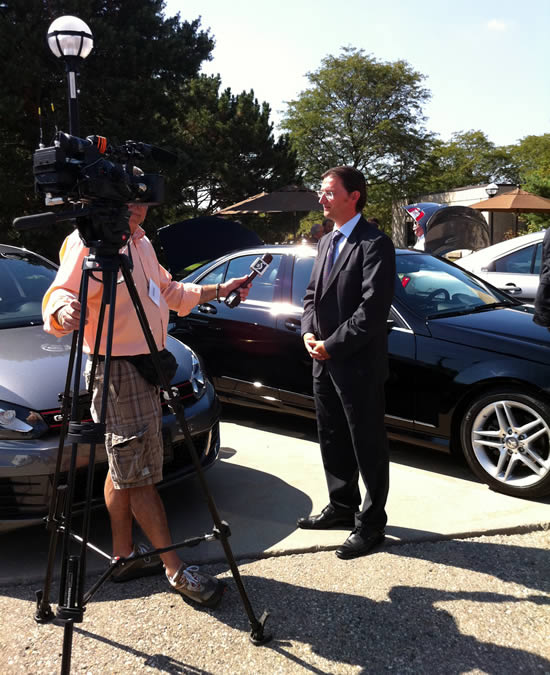USDOT V2V Model Deployment Launch in Ann Arbor, MI


Mercedes-Benz supports research fleet for Vehicleto- Vehicle Model Deployment.
Mercedes-Benz Research & Development North America, Inc. (MBRDNA) is supporting the U.S. Department of Transportation (USDOT) Vehicle-to-Vehicle (V2V) Model Deployment. This activity, to be officially launched on August 21, 2012 in Ann Arbor, Michigan, is the largest connected vehicle field operational trial in the world, with over 2800 passenger, commercial, and transit vehicles. The purpose of this trial is to evaluate, in real world scenarios, automotive safety technology based on wireless communications between vehicles. Academia, industry, and government have all come together to assure the success of this effort.

The wireless communications technology used in the V2V Model Deployment is 5.9 GHz Dedicated Short Range Communications (DSRC). Mercedes-Benz, a pioneer in automotive safety, considers innovations based on 5.9 GHz DSRC, in combination with invehicle Advanced Driver Assistance Systems, as an important step on the road towards accident free driving. For this reason, Mercedes-Benz continues to collaborate with government agencies and other major car manufacturers in the United States and Page 2 Europe to develop effective safety solutions based on 5.9 GHz DSRC.

MBRDNA equipped eight Mercedes-Benz C-300 passenger vehicles and three Freightliner heavy-duty commercial trucks with fully integrated 5.9 GHz DSRC systems to support the V2V Model Deployment. The passenger vehicles feature LED strip lighting on the dashboard that illuminate to warn the driver of an impending collision risk. The commercial vehicles display warnings through tablet devices installed in the cockpit. Local Ann Arbor residents will drive these vehicles over the course of one year, while researchers collect and analyze data to assess the systems’ effectiveness.
In addition to its participation in USDOT V2V Model Deployment, Mercedes-Benz’s strong support for V2V communication is also evident in other projects in this area, for instance the simTD research project. (The name simTD stands for ‘Safe Intelligent Mobility – test field Germany’.) Headed by Mercedes-Benz, the aim of the recently started simTD field trial is to test the V2V systems’ suitability for everyday use in real-life traffic conditions on the roads of the Rhine-Main region.


